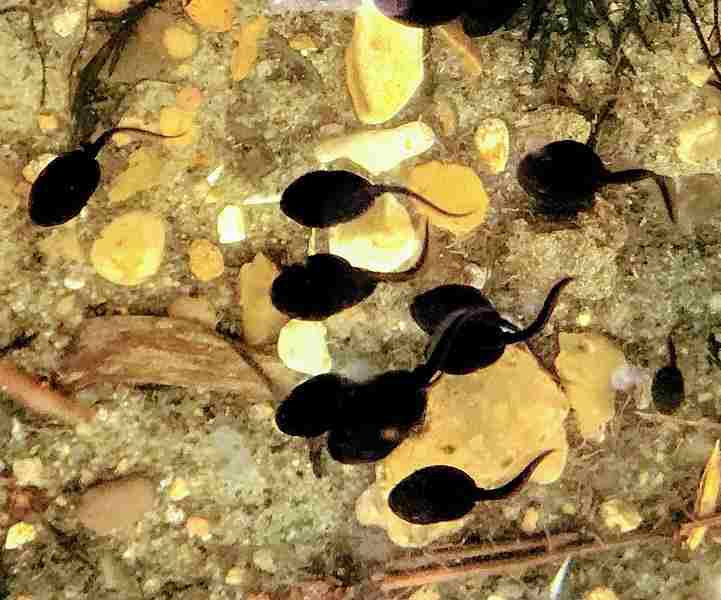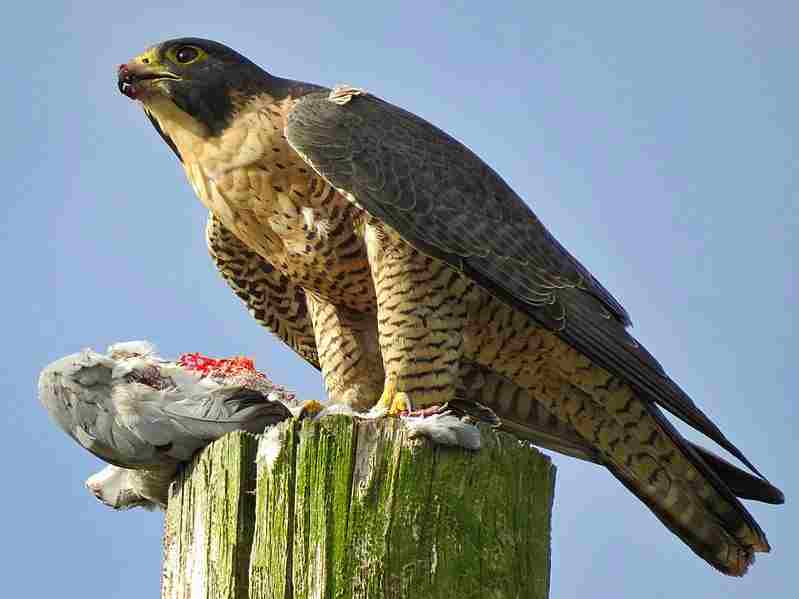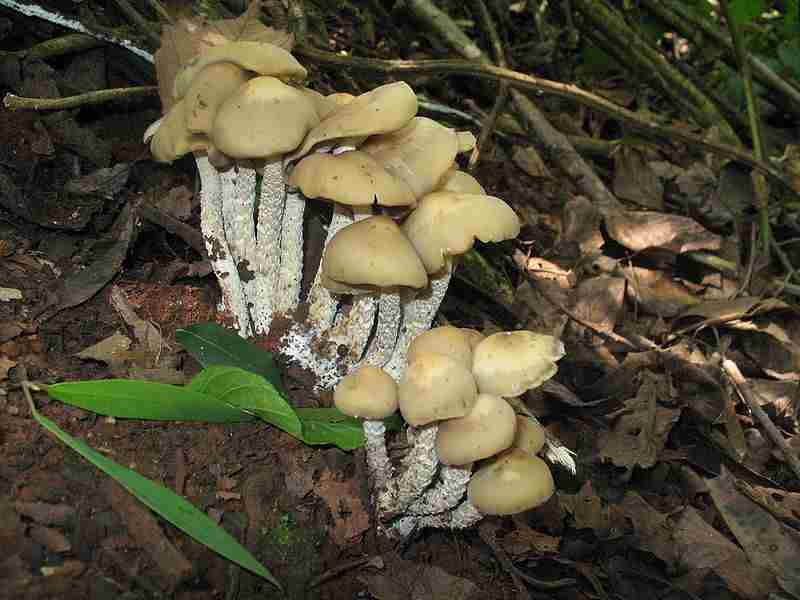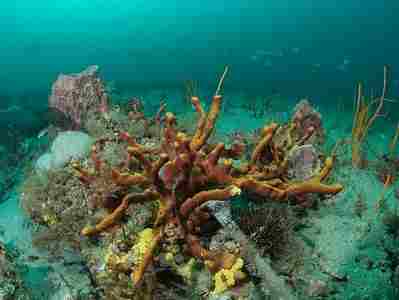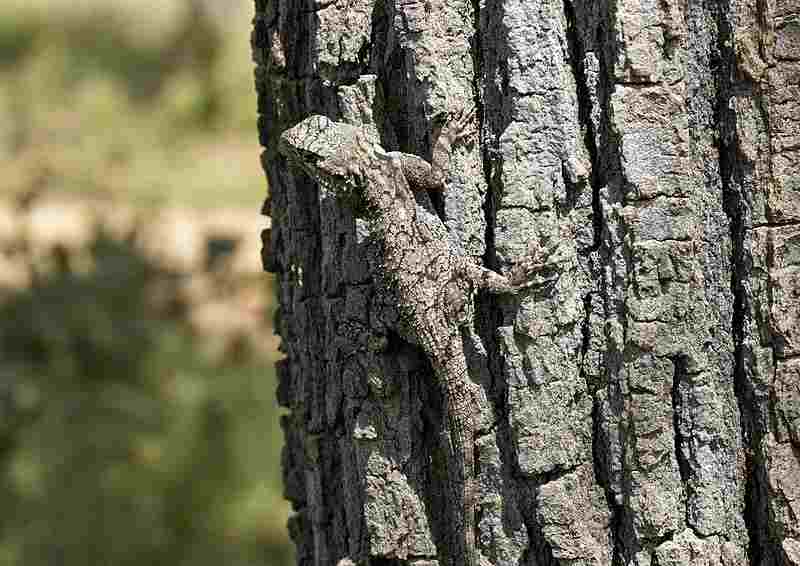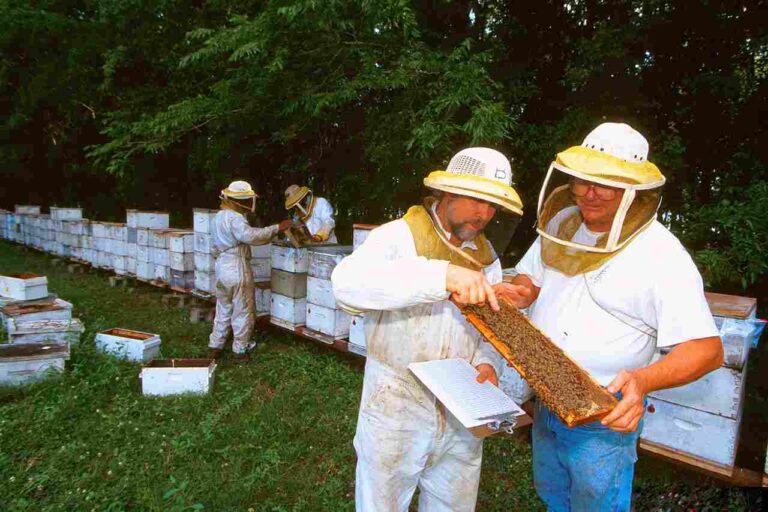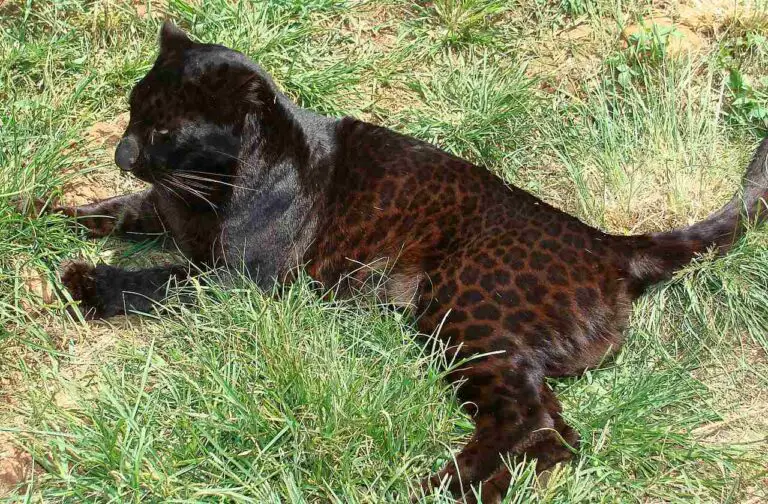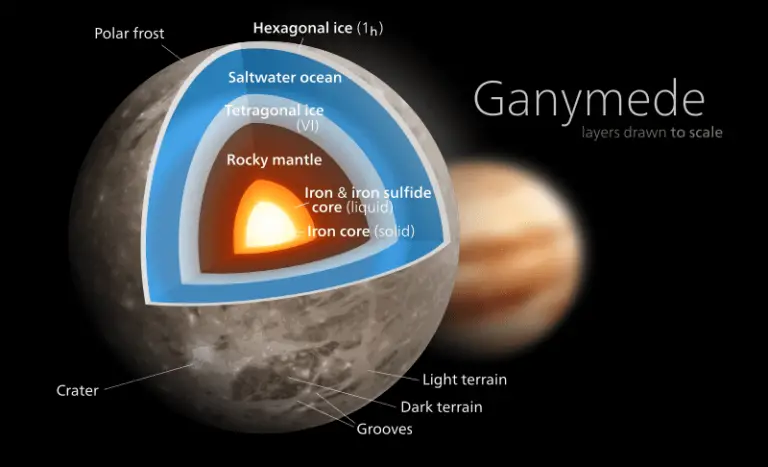Freshwater Energy Pyramid Trophic Components and Functions
Freshwater energy pyramid comprises of producers, primary consumers, secondary consumers, tertiary consumers, as well as decomposers and their energy-intensive activities.
This article discusses freshwater energy pyramid in terms of its trophic components and their various contributions, as follows;
1). Producers: Biotic Components of the Freshwater Energy Pyramid
Producers in the freshwater ecosystem are the foundational organisms that kick-start the process and sequence of energy flow within this habitat.
They are responsible for capturing and transforming light energy from the sun into organic compounds (biomass) through the process of photosynthesis [7]. These primary producers are mainly represented by plants (vascular and non vascular) and algae (including phytoplankton and macroalgae), and their contribution to the energy budget and dynamics of the freshwater ecosystem is paramount.

Contribution(s) of Producers to the Energy Budget and Dynamics of the Freshwater Ecosystem
Producers contribute to the dynamics of the freshwater energy pyramid through photosynthetic activities, by which they establish the foundation of the aquatic food chain, initiate energy transfer, produce oxygen, facilitate the recycling of nutrients, stabilize the ecosystem, and support organic sustainability.
Freshwater producers, including hydrophytic plants and various types of algae (like phytoplankton, cyanobacteria), are equipped with chlorophyll, which allows them to harness light in solar radiation. Through the process of photosynthesis, they convert this solar energy into chemical bioenergy that is stored in the form of glucose and other organic molecules [10].
By reason of their photosynthetic capability, producers serve as the primary energy resource for the entire freshwater food web. They make up the biotic component at the base of the aquatic food chain, as all heterotrophs including herbivores and carnivorous consumers rely on them directly or indirectly for sustenance. The herbivores that rely on freshwater producers include aquatic insects, small fish, and crustacean-zooplankton.
As herbivores consume producers, they assimilate the stored energy in the organic matter produced (through photosynthesis) by these primary producers. This energy that has been assimilated, is then transferred up the food chain as herbivores are preyed upon by secondary carnivores and other higher-level consumers. Each trophic level in the food web is ultimately dependent on the energy captured by producers.
The aquatic oxygen cycle is supported by freshwater plants and algae, which are also critical for the release of oxygen (O2) as a byproduct of photosynthesis [4]. This oxygen is dissolved in the water column, where it supports the aerobic processes of aquatic organisms, including fish, microbes and various invertebrates.
In addition to energy transfer, freshwater producers have a function with respect to local nutrient cycling. They absorb essential nutrients like carbon, nitrogen, sulfur and phosphorus from the water and sediments as they grow and photosynthesize. When herbivores consume them, these nutrients are incorporated into their tissues.
Decomposers further extend the use of these nutrients, which they eventually release back into the ecosystem when they cause the biodegradation of organic matter. This dynamic ensures the continuous recycling of vital nutrients.
The presence of healthy populations of freshwater producers helps to stabilize the ecosystem. These producers provide habitat structure, minimize erosion along the margins of water bodies, and contribute to water purification by acting as natural filtration systems or barriers that trap and retain sedimentary materials and other potential pollutants.
Lastly, producers create valuable habitats (like vegetation beds) and provide both shelter and food for a wide variety of aquatic organisms. Many species of fish, for example, depend on submerged aquatic vegetation as nursery areas and feeding grounds.
2). Primary Consumers in the Freshwater Ecosystem and Their Contribution to Energy Dynamics
Primary consumers within the freshwater ecosystem, are crucial in their role with regards to maintaining the energy budget and flow-dynamics of this habitat.
They are herbivores, which means they mainly feed on primary producers, such as semi-aquatic plants, algae, and freshwater hydrophytes.
Examples of primary consumers in freshwater ecosystem are; tadpoles, freshwater snails, herbivorous fish, and zooplankton.

How Primary Consumers Contribute to Energy Flow Within the Freshwater Ecosystem
Primary consumers contribute to the energy flow within the freshwater ecosystem by gaining and transferring autotrophic energy, cycling nutrients, regulating primary producer communities, improving trophic energy efficiency, as well as by supporting higher level organisms, overall species richness and trophic structure.
Flow of resources within the freshwater energy pyramid is facilitated by primary consumers that serve as the link between primary producers (plants, algae) and non-herbivorous consumers in higher trophic levels of the food web.
They consume algae and plant material, thereby assimilating the energy stored in biomass produced photosynthetically by these primary producers. This energy transfer from producers to consumers is fundamental to sustaining the entire ecosystem, because it is what ensures that the consumer community survives.
As primary consumers graze on plants and algae, they not only obtain energy, but simultaneously incorporate some essential nutrients like carbon, phosphorus and nitrogen, into their own tissues. When these primary consumers are preyed upon by higher-level consumers, or when they die and their remains undergo decomposition, the incorporated nutrients are returned in their inorganic form to the ecosystem. This mechanism of nutrient cycling is vital for the growth and vitality of the entire freshwater ecosystem.
Because of their ability to survive on autotrophic biomass, primary consumers can directly impact primary producers. They control the abundance of plants and algae through herbivory, thereby helping to maintain a state of balance in the ecosystem [8]. However, this also implies that overpopulation of primary consumers could potentially deplete primary producers, and disrupt the energy pyramid.
While energy is being transferred from primary producers to primary consumers, there is usually an energy loss. Only about 10% of the energy at the producer level is passed on to primary consumers. The rest is utilized by primary producers for basic organic processes like photosynthesis and respiration, or is lost as heat energy. This energy efficiency concept is fundamental to understanding the composition and processes of trophic levels in ecosystems.
Primary consumers are an important food source for secondary consumers (carnivores) in the freshwater ecosystem. They serve as prey, providing the energy and nutrients necessary for the survival, growth and reproduction of higher trophic level organisms, such as predatory fish, amphibians, and some aquatic arthropods.
The presence of primary consumers contributes to the biotic constitution and complexity of the freshwater energy pyramid. They create multiple pathways for energy flow, thereby facilitating diverse interactions among species within the ecosystem.
Lastly, the diversity of primary consumers in the freshwater ecosystem is relatively high, and includes a wide range of herbivorous insects, mollusks, crustaceans, and even some fish species [5]. This diversity supports some evolutionary processes that lead to coexistence of various biotic groups within the ecosystem.
3). Secondary Consumers: Biotic Components of the Freshwater Energy Pyramid
Secondary consumers in the freshwater ecosystem are contributors to the energy budget and dynamics of this habitat.
They are basically carnivores, which means they feed on primary consumers, such as herbivorous insects, fish, and other low-level organisms that consume algae an aquatic plants.
How Secondary Consumers Contribute to the Flow of Energy Within the Freshwater Ecosystem
Secondary consumers contribute to the energy flow within the freshwater ecosystem by facilitating energy transfer, regulating herbivore populations, cycling nutrients, supporting the food web structure, and facilitating trophic cascades.
With regards to the sequence of energy transfer, secondary consumers occupy the next level in the food chain after primary consumers. They obtain their own energy by consuming primary consumers like herbivorous mollusks, which, in turn, obtain their energy from primary producers (plants, algae). This trend of energy transfer is essential for the movement of energy through the ecosystem.
Herbivore (primary consumer) populations are regulated through the activities of secondary consumers. By preying on primary consumers, they control the abundance of these herbivores. Such regulatory effect prevents overgrazing of primary producers [6], which could otherwise disrupt the equilibrium of freshwater biotic resources.
As secondary consumers prey on primary consumers, they incorporate the nutrients and energy present in these lower organisms into their own tissues. When secondary consumers die and decompose, or are preyed upon by higher-level consumers, these nutrients formerly gained and stored, are released back into the ecosystem. This contributes to nutrient cycling that determines the availability of essential elements like carbon, phosphorus and nitrogen.
Secondary consumers introduce some degree of complexity into the freshwater food web. They create additional trophic levels and viable pathways for energy flow, thereby facilitating a diverse array of species interactions within the ecosystem.
By reason of their position in the trophic hierarchy, secondary consumers serve as a food source for tertiary consumers, which are the apex predators and operate above them in the freshwater ecosystem. This flow of energy from secondary consumers to tertiary consumers is important for maintaining the population dynamics and vitality of the ecosystem.
In similar fashion to energy transfer in other trophic levels, there is an energy loss that occurs between primary consumers and secondary consumers. It is estimated that only about 10% of the energy available at the primary consumer level is transferred to secondary consumers in the freshwater energy pyramid. This loss is a natural phenomenon that can be attributed to heat release and metabolic processes.
Lastly, changes in the abundance, distribution or behavior of secondary consumers can have notable cascading effects on organisms in lower trophic levels, including primary consumers and primary producers [1]. This phenomenon; known as the trophic cascade, can impact the entire ecosystem.
4). Tertiary Consumers in the Freshwater Ecosystem and Their Contribution to Energy Dynamics
Tertiary consumers in the freshwater ecosystem are organisms usually positioned at the highest trophic level within this habitat.
They may be carnivorous or omnivorous, and feed on lower organisms including secondary consumers, which are carnivores that prey on primary consumers.
Contribution of Tertiary Consumers to the Energy Budget and Flow-Trend of the Freshwater Ecosystem
Tertiary consumers contribute to the energy budget and dynamics of the freshwater ecosystem by preying on other consumers, cycling nutrients, controlling lower organic populations, and contributing to food web complexity.
As top predators in the trophic hierarchy, tertiary consumers are able to feed on animals from all lower trophic levels. In the freshwater ecosystem, they prey on secondary consumers such as carnivorous fish and amphibians, that consume primary consumers like mollusks, herbivorous fish and arthropods.
This form of predation helps to control the populations of secondary consumers; and prevents excessive predation along with its negative ecologic impacts.
As already implied, tertiary consumers obtain bioenergy for their activities, by consuming other animals. This energy is transferred up the food chain from secondary consumers to tertiary consumers, so that the latter can be said to play a role in the upward movement of energy through the ecosystem.
Nutrient cycling is another byproduct of tertiary consumer activities. When tertiary consumers produce waste, or die and are consumed by scavengers and decomposers, the nutrients (and energy) which are stored in their tissues, are then released back into the ecosystem. This outcome contributes to nutrient cycling and the availability of essential elements within the freshwater habitat.
Tertiary consumers can significantly influence the abundance, distribution, instantaneous behavior and adaptation of lower consumers, and may also indirectly affect primary consumers. Therefore, changes in the populations of tertiary consumers can have cascading effects throughout the ecosystem.
Complexity in the freshwater food web can be partly attributed to tertiary consumers, which establish an additional trophic level through their presence and activities. This complexity supports a diverse range of ecological relationships and species interactions, within the ecosystem.
Energy loss occurs as resources are transferred from secondary consumers to tertiary consumers in the freshwater energy pyramid. Like other trophic levels, it is estimated that only about 10% of the energy available to secondary consumers is transferred successfully to tertiary consumers.
Tertiary consumers are often considered apex predators within their ecosystems, meaning they usually have no natural predators themselves. Using this advantage, they are vital and effective in regulating the populations of lower trophic levels and maintaining the overall equilibrium of the ecosystem.
In the freshwater ecosystem, tertiary consumers may include animals like adult caimans, river otters, and large predatory fish like wels catfish and sturgeon. These organisms have adapted to be efficient predators and are crucial in maintaining the ecological health and stability of freshwater habitats.

5). Decomposers: Biotic Components of the Freshwater Energy Pyramid
Decomposers in the freshwater ecosystem are indispensable components of the ecosystem's energy pyramid and its processes. They are primarily represented by saprophytic microorganisms, such as bacteria and fungi, which are vital in breaking down waste plant and animal materials [2].
How Decomposers Support Energy Flow in the Freshwater Ecosystem
Decomposers contribute to the energy budget and dynamics of the freshwater habitat by recycling nutrients, transferring energy, detoxifying the environment, and supporting food chains.
As earlier stated, decomposers are responsible for the degradation of organic matter, including plant and animal remains, as well as their wastes. Through the process of decomposition, they break down complex organic compounds in biomass, into simpler products, and release essential nutrients like nitrogen, carbon and phosphorus back into the ecosystem. These nutrients thereby become available to primary producers like as plants and algae, which utilize them for growth.
When decomposers break down organic substrates, they obtain energy from the chemical reactions involved in decomposition. This energy is used for their own sustenance, metabolism and reproduction. Some of this energy is also transferred to other organisms that feed on microbial decomposers, such as detritivores (which can also be classified as secondary decomposers).
Detoxification or natural remediation of the environment is another function of decomposers, which break down and neutralize harmful substances present in organic substrates, including various biochemical toxins [9]. This detoxification process is helpful to the overall productivity of the freshwater ecosystem.
Decomposers also contribute to maintaining the water quality of freshwater habitats by removing organic contaminants, and preventing the accumulation of biogenic wastes that can lead to oxygen depletion and water degradation.
The freshwater food web is supported by decomposers, which are an essential part of the natural trophic sequence in this ecosystem. They serve as a source of food for various organisms, including detritivores, some primary consumers, as well as some secondary consumers. By providing a nutrients and energy to these organisms, they support the entire ecosystem.
Lastly, decomposers are critical for the cycling of both energy and matter within the freshwater ecosystem. They facilitate the flow of energy from organic wastes, back into the ecosystem and ensure that nutrients are continuously recycled, making them available for use by living organisms.
Overview of Decomposers in Freshwater Streams and Marshes
In a freshwater stream, decomposers include bacteria, fungi, and some macroscopic invertebrates that colonize organic substrates like shed leaves, animal remains, and organic debris. These decomposers break down such biogenic materials, and release nutrients that are essential for the growth of primary producers like algae and aquatic vascular plants. This nutrient cycling mechanism is fundamental to the health and productivity of freshwater ecosystems like streams and rivers, as well as lakes and ponds.
Decomposers in freshwater marshes also include bacteria and fungi, which are supported by various scavenging arthropods found in wetland environments. These decomposers break down plant matter, animal remains, algal litter, and other organic substrates, releasing nutrients as byproducts that support the growth of wetland autotrophs.
*Pathways of Energy Loss and the Ten Percent Rule in Freshwater Energy Pyramid
In freshwater ecosystems, the flow of energy through the trophic hierarchy follows a fundamental ecological principle known as the Ten Percent Rule. This rule describes how energy is transferred and lost as it moves from one trophic level to another within the ecosystem.
Below is a summary of the pathways of energy loss and the Ten Percent Rule for each trophic level in a freshwater energy pyramid;
1. Primary Producers (Plants and Algae)
At the base of the freshwater energy pyramid are the primary producers, mainly hydrophytes and algae.
These organisms capture solar energy through photosynthesis and convert it into chemical energy in the form of organic compounds (such as glucose).
However, not all of the captured energy is converted into chemical energy, or utilized productively. Some energy deflects or dissipates as waste heat during photosynthesis, while some is used for the autotroph's metabolic processes.
2. Primary Consumers (Herbivores)
Primary consumers, such as aquatic mollusks and herbivorous fish, feed on primary producers to obtain energy.
When primary consumers consume plants and algae, they assimilate only a fraction of the energy stored in these organisms. The rest is lost as organic waste or heat, or is used for metabolic activities like respiration.
3. Secondary Consumers (Carnivores)
Secondary consumers are predators that feed on primary consumers.
As energy moves up to this trophic level, more of it is lost. This is because secondary consumers expend significant amounts of energy in hunting, capturing, consuming and digesting their prey.
Additionally, not all the energy stored in the primary consumers is efficiently transferred to secondary consumers. Some energy is lost to inefficient digestion, metabolic processes, and as fecal waste.
4. Tertiary Consumers (Top Predators)
Tertiary consumers, which can include large predatory fish, waterbirds, mammals, or reptiles; feed on primary and secondary consumers.
Energy loss continues at this level. Tertiary consumers expend energy in hunting and capturing prey.
Like in previous levels, not all of the energy stored in the secondary consumers is transferred to tertiary consumers. Energy is lost to digestion, metabolism, and production of waste.
5. Decomposers
Decomposers, such as bacteria and fungi, break down organisms substrates from dead organisms and fecal matter, thereby releasing nutrients back into the ecosystem.
Even though decomposers are not core components of the food chain, they are instrumental for nutrient recycling. However, they do not contribute significantly to the energy flow sequence, as their primary role is breaking down organic matter rather than transferring chemical energy.
*The Ten Percent Rule of Trophic Transfer Efficiency (TTE) in the Freshwater Energy Pyramid
The Ten Percent Rule is a fundamental ecological principle which states that only about 10 percent of the energy from one trophic level is successfully transferred to the next trophic level [3]. The remaining 90 percent is typically lost at each transition. This energy loss occurs mainly through heat dissipation, metabolic consumption, and waste production.
For instance, if freshwater primary producers capture 100 units of energy through photosynthesis, only around 10 units of energy will be available to primary consumers when they consume these producers.
As a result, energy availability decreases consistently with each transition across trophic levels, which limits the number of trophic levels that can be sustained by the resources in an ecosystem. This principle helps to explain why food chains and food webs in many freshwater ecosystems are relatively short, and why there are fewer apex predators compared to primary consumers.
The Ten Percent Rule and energy loss phenomenon, are critical concepts in ecology, as they influence the structure and functioning of freshwater ecosystems and in fact all ecosystems worldwide. Understanding these principles helps conservationists and researchers to manage and protect these vital biomes.
Conclusion
The freshwater energy pyramid comprises of;
1. Producers
2. Primary Consumers
3. Secondary Consumers
4. Tertiary Consumers
5. Decomposers
References
1). Ford, A. T.; Goheen, J. R. (2015). "Trophic Cascades by Large Carnivores: A Case for Strong Inference and Mechanism." Available at: https://doi.org/10.1016/j.tree.2015.09.012. (Accessed 27 September 2023).
2). Gessner, M. O.; Ryckegem, G. V. (2003). "Water Fungi as Decomposers in Freshwater Ecosystems." Encyclopedia of Environmental Microbiology. Available at: https://doi.org/10.1002/0471263397.env314. (Accessed 27 September 2023).
3). Jones, R.; Henderson, E. W. (1985). "The dynamics of energy transfer in marine food chains." South African Journal of Marine Science, Volume 5, 1987 - Issue 1. Available at: https://doi.org/10.2989/025776187784522324. (Accessed 27 September 2023).
4). Kratochvil, H. G.; Pollirer, M. (2017). "Acoustic effects during photosynthesis of aquatic plants enable new research opportunities." Springer Nature, Scientific Reports 7(1):44526. Available at: https://doi.org/10.1038/srep44526. (Accessed 27 September 2023).
5). Outa, J.; Chrispin, K.; Avenant-Oldewage, A.; Jirsa, F. (2020). "Trace Elements in Crustaceans, Mollusks and Fish in the Kenyan Part of Lake Victoria: Bioaccumulation, Bioindication and Health Risk Analysis." Archives of Environmental Contamination and Toxicology 78(2). Available at: https://doi.org/10.1007/s00244-020-00715-0. (Accessed 27 September 2023).
6). Terborg, J.; Estes, J. A.; Paquet, P. C.; Ralls, K.; Boyd-Heger, D.; Miller, B.; Noss, R. (2001). "The Role of Top Carnivores in Regulating Terrestrial Ecosystems." Available at: https://www.academia.edu/33551482/The_Role_of_Top_Carnivores_in_Regulating_Terrestrial_Ecosystems. (Accessed 27 September 2023).
7). Townsend, S. A.; Webster, I.; Burford, M. A.; Schult, J. (2018). "Effects of autotrophic biomass and composition on photosynthesis, respiration and light utilisation efficiency for a tropical savanna river." Marine and Freshwater Research 69(8). Available at: https://doi.org/10.1071/MF17172. (Accessed 27 September 2023).
8). Wood, K. A.; O'Hare, M. T.; McDonald, C.; Searle, K. R.; Daunt, F.; Stillman, R. A. (2017). "Herbivore regulation of plant abundance in aquatic ecosystems." Biol Rev Camb Philos Soc. 2017 May;92(2):1128-1141. Available at: https://doi.org/10.1111/brv.12272. (Accessed 27 September 2023).
9). Yu, J.; Lai, J.; Neal, B. M.; White, B. J.; Banik, M. T.; Dai, S. Y. (2023). "Genomic Diversity and Phenotypic Variation in Fungal Decomposers Involved in Bioremediation of Persistent Organic Pollutants." Journal of Fungi 9(4):418. Available at: https://doi.org/10.3390/jof9040418. (Accessed 27 September 2023).
10). Zhang, S. S.; Sun, J.; Feng, D.; Sun, H.; Cui, J.-Y.; Zeng, X.; Wu, Y.; Luan, G.; Lu, X. (2023). "Unlocking the potentials of cyanobacterial photosynthesis for directly converting carbon dioxide into glucose." Springer Nature, Nature Communications 14(1). Available at: https://doi.org/10.1038/s41467-023-39222-w. (Accessed 27 September 2023).
